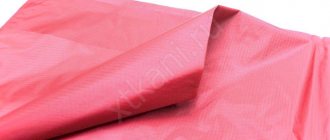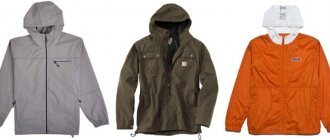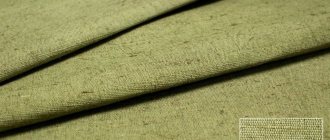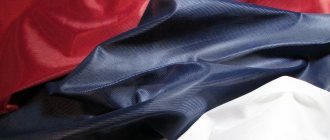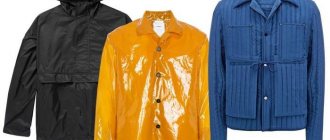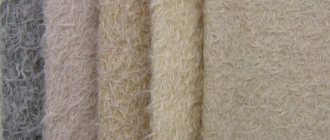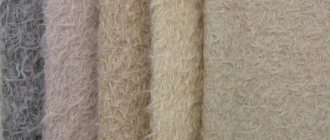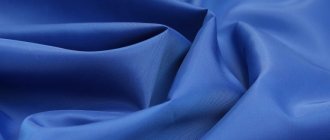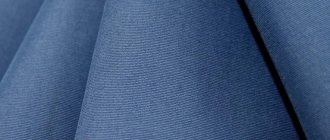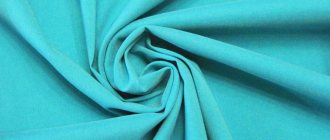The modern tourist consists of 80%... nylon. How and why this happened - read our article
In 1939, at the World's Fair in New York, DuPont greeted visitors with a model of 12-meter female legs, dressed in stockings made of a never-before-seen synthetic material. The advertising show-stopper turned out to be an excellent metaphor: it was on this day that the invention of the American chemist Wallace Hume Carothers, called nylon, began its triumphant march across the planet.
For many decades, the nylon “road” resembled either a highway or a path overgrown with weeds, but the unchallenged dominance of natural materials is a thing of the past forever. Natural silk gave way to synthetics, and the great Silk Road passed the baton to the no less great nylon.
Wallace Hume Carothers , an American scientist and inventor, a leading organic chemist at DuPont, solved the difficult problem of synthesizing a high molecular weight polymer on February 28, 1935. The new synthetic material is called polyamide 6,6 . However, its commercial use under the name nylon began more than three years later. Carothers did not live long enough to see the premiere - on April 28, 1937, he committed suicide, surrendering to the fight against an acute mental disorder that had haunted him all his life.
Wallace Hume Carothers - American scientist, leading organic chemist at DuPont, inventor of nylon
During almost ten years, during which Wallace Carothers headed the DuPont laboratory, also known as the “Hall of Pure Science” (Puruty Hall), under his leadership, polyester, better known as polyester, neoprene and nylon, were first synthesized. All three polymers are now widely used in the production of outdoor materials, so the DuPont laboratory can safely be considered the cradle of many modern equipment technologies.
America has always been a business territory, so it is not surprising that the invention of nylon immediately interested businessmen. The stocking launch of the commercial use of nylon turned out to be extremely successful: on the first day of sales, a million women became the happy owners of new stockings. And this despite the fact that nylon stockings were noticeably more expensive than silk ones.
Nowadays it is quite difficult to imagine how artificial nylon could be more expensive than natural silk, but at that time it was exactly like that. Nylon was not only more expensive, but also much more prestigious. Owning nylon stockings emphasized the special status of the owner and her financial situation.
The high cost and prestige of nylon products are reflected even in the works of people who seem infinitely far from commerce, such as, for example, Vladimir Vysotsky. In his song “Dialogue at the TV” he mentions one of the varieties of nylon fabrics:
At least my friends are not in Bolonia, But they are not dragging me away from my family...
Bologna , also a nylon fabric with a waterproof coating, was widely known in the mid-1970s as a material for the production of rather expensive waterproof jackets and raincoats.
Commercial use of nylon in America was interrupted only once, during World War II. The strength and lightness of the new material led to the fact that nylon was recognized as a strategic material, and all its production facilities were used to manufacture products for the army, mainly parachutes. The first parachutes made of nylon, a material “thinner than spider webs and stronger than steel,” appeared in 1938. To this day, the combination of price, strength, lightness and durability of nylon in the production of parachutes remains unsurpassed.
Kapron is the brother of nylon
polyamide 6 , the polymer material closest to nylon, was synthesized for the first time It was obtained in Germany by chemist Paul Schlack and became known as polycaprolactam. Textile fiber made from polycaprolactam is called perlon . The beginning of the production of polycaprolactam in the USSR dates back to 1948, and the fiber from this material in the Soviet Union was called nylon . In essence, this is the same nylon, which in a practical sense differs only in its lower melting point. The similar characteristics of nylon and nylon have led to the fact that the scope of application of these materials is actually the same.
In the second half of the last century, the so-called calendered nylon (in tourist slang “calender”) was very popular among tourists - nylon fabric, the surface of which was strengthened by rolling the material between hot rollers.
Kevlar is also a relative of nylon
Kevlar - an amazing fiber, also a polyamide, the fabric of which is so strong that it can stop bullets - was first obtained in the mid-60s of the 20th century, all in the same DuPont laboratories.
Its commercial use began in 1971. Kevlar differs from nylon by one group of atoms, but its strength is hundreds of times higher. True, it is noticeably heavier. Kevlar is used where it is necessary to increase the resistance of a product to tearing or abrasion, for example in trekking shoes or clothing for motorcyclists.
Nylon composition
The composition of nylon fabric varies; we list the options that are most often found in stores:
Elastic nylon is a type of polymer fabric that stretches well. Such synthetics are often used to make sportswear.
Nylon ripstop is widely used when sewing military and tourist clothing, and the fabric does not unravel when torn.
Nylon-Kevlar is particularly durable: several sheets of this type of fabric folded together can withstand the “blow” of a bullet.
Liquid nylon is made from petroleum, is highly breathable and allows the body to breathe. It is used to produce women's tights and stockings.
- Density - about 120 g/sq.m.
Nylon fabric production
Nylon is formed as a result of the so-called polycondensation reaction. Adipic acid and aldehyde form a salt, which is then mixed in a solvent and heated. The resulting substance, polyamide 6,6, has thermoplastic properties. That is, it can be melted, and fiber can be pulled out of the melt. This happens by pressing the melt through dies - partitions with many small holes.
Schematic diagram of the production of nylon thread
After passing through the dies, the melt turns into threads, which then cool, harden and are wound onto spools. These threads will be the same nylon fiber, which is the basis of any nylon knitted or woven product - from stockings to parachutes. Nylon dyes well, and if a dye was added to it during the preparation of the melt, the thread will turn out colored in the mass.
The density of nylon thread is indicated in den. This indicator indicates the weight of the thread in grams per 9 km of its length. The higher the denier, the denser the thread. tex is also used . 1 tex is the fiber density at which 1 km of its length weighs 1 g.
Nylon is an inert material, it does not have a harmful effect on the skin, does not cause allergies and is therefore widely used in the production of clothing directly adjacent to the body.
What is nylon?
Nylon was developed and produced as an alternative to natural silk. The fibers of the material are so smooth that they have a similar shine. Such a thing immediately catches your eye, as it has a rich, bright color that lasts for a long time when worn and even regularly washed.
Manufacturing technology
Nylon is actually plastic. In production, a chemical reaction is carried out, which results in a thin, long fiber. It is pulled into thread, which is used in the production of fabrics.
Finished fibers are used as an independent basis for fabric, or as an integral part of a mixed material. The properties of the resulting fabric may vary depending on the type of weaving and density.
To clarify the composition of the fabric when purchasing it in a store, it is worth studying the composition on the label - the percentage of all components is always indicated there. Today, clothing and household accessories are sold from different varieties of nylon, so it is important to know exactly what properties the finished product will have.
Types of nylon fabrics
Nylon textile fabric is no different in structure from textiles made from any other material. It is produced on the same looms and looks like fibers tightly woven together. The weave is always mutually perpendicular, but the pattern and weave patterns are varied, which to a large extent determines the final properties of the fabric.
Mutually perpendicular weave of threads in the fabric
The linen that comes out of the loom is usually called gray. This means that it is not processed in any way, not impregnated or anything applied to it. It is already strong and light, but does not yet have any specific features, and therefore, in order to achieve certain characteristics, it is subjected to additional processing.
Advantages of nylon fabric
Nylon has many advantages; thanks to its high strength, products made from this fabric can be used at any time of the year and on an everyday basis. The sophisticated appearance is guaranteed to attract attention, and due to abrasion resistance, the products will retain their luxurious appearance for a long time. The material is simple and easy to care for - with proper care, the products will delight you with positive qualities throughout their entire service life.
Besides:
- nylon retains heat perfectly (thus, the fabric is incredibly comfortable at any time of the year)
- resistance to color saturation
- durability
- A large assortment will allow you to successfully select products for absolutely any style. Nylon items go well with various stylistic trends in clothing
- light weight ensures comfortable wearing
How nylon is improved
Elastic nylon
Regular nylon fabric does not stretch, making it difficult to use in clothing. Often, to increase the elasticity of the material, elastomers are added to nylon thread - polymer fibers with a high degree of elongation. By themselves, elastomeric fibers are not strong enough, so they are usually used in combination with nylon or polyester thread.
Perhaps the most famous elastomer, elastane , better known as lycra , was first produced in 1959 by Invista . Lycra brand is the commercial name for elastane manufactured by Invista. Another known name for elastane is spandex .
Nylon and Lycra are most often used in sportswear that needs to be tight-fitting and stretchy. Such clothes are used, for example, by road cyclists. The elastic material does not interfere with movement, and the smoothness and tight fit to the body does not create aerodynamic interference. The label of such a product will most likely contain the inscription: Polyamid 80%, Lyсra 20% or Nylon 80%, Lykra 20%.
Nylon thread can be made elastic without adding elastomers. To do this, the fiber is given a so-called crimp, after which it becomes like a spring, and its stretchability compared to a straight thread increases significantly.
Ripstop
Reinforcing threads are woven into a fabric of thinner fibers
Ripstop (English ripstop) is a term of English origin, literally translated as stopping the rupture. Ripstop technology increases the strength of the woven fabric by weaving denser and stronger threads into it. In order not to make the fabric too heavy, reinforcing threads are woven at regular intervals, resulting in a checkered pattern on the fabric. A mesh of denser threads strengthens the fabric and makes it tear-resistant. Even if the tissue is pierced by a nail, the rupture will most likely be stopped at the border of such a cell.
Cordura
This type of strong and durable nylon fabric was invented and patented by DuPont and later sold by Invista. Although Cordura® is a brand name, Cordura is the common name for all strong nylon fabrics.
Often, to improve water-repellent properties, the surface of nylon fabrics or even individual fibers is coated with a thin layer of polyurethane or silicone. Such fabrics are used, for example, to make tent awnings.
A layer of polyurethane (PU) is usually applied to the inner surface of the fabric and, depending on the thickness of the film, makes the material more or less waterproof. For example, it is believed that the nylon bottom of a good backpacking tent should have a water resistance of at least 8000 mm water column. The thickness of the polyurethane coating is responsible for the value of this indicator.
The silicone coating on nylon repels water due to the very low wettability of silicone. Siliconized fabric is usually lighter than PU-coated nylon and is quite slippery to the touch.
Blended fabrics
Natural wool or cotton fabrics have long proven themselves to be very comfortable and pleasant to wear. However, they have some disadvantages. One of the main ones is poor wear resistance. Wool also stretches or, conversely, shrinks when washed. In order to improve the characteristics of natural fabrics, synthetic fibers are added to them, and often this is nylon. The addition of nylon threads gives the product additional strength, wear resistance and practicality.
Is nylon safe?
Sometimes the word “synthetics” sounds like a death sentence. It seems like something hard sticks to the body under the influence of static electricity and irritates the skin. Nylon is 100% synthetic fabric. The only “fault” of this material is its chemical production. However, chemical origin does not mean that the material was created from toxic or poisonous materials, it’s just that science, not nature, worked to create the fibers.
In fact, synthetic additives increase the life of natural fabrics, retain their shape, prevent wrinkles and save time on using an iron. In order not to be afraid for the condition of your skin and not to think about allergies, synthetic items can be worn over natural fabrics to protect from wind and bad weather. For example, nylon jackets are suitable even for allergy sufferers, because all “side effects” can only occur with prolonged contact with bare skin.
Nylon fibers are added to natural fabrics to improve their performance. Don't be afraid of the word "synthetic". Nylon is a safe material, but you need to purchase and use it responsibly, read the ingredients on the label and check your skin’s reaction.
Properties of nylon fabrics
Advantages of nylon fabrics
Ease
Nylon fabrics are usually noticeably lighter than their natural counterparts. For example, silk fabric is approximately 20% heavier than nylon fabric of similar thickness.
Strength
Nylon is almost twice as strong as silk. It was the strength of nylon, combined with its lightness, that led to the fact that during the Second World War, all the production capacities of this then new material were used for the needs of the military industry.
Practicality
Nylon fibers are hydrophobic, they do not absorb moisture, which means the fabric made from them dries quickly. The nylon fabric does not cake, and when wrinkled, it is easily smoothed out. Nylon does not lose its appearance after many washing cycles, dries quickly and keeps its shape well. Nylon fiber does not break down in water, does not rot or is damaged by insects.
Disadvantages of nylon fabrics
Breathing poorly
Nylon fabric does not breathe well, so it is easy to sweat in nylon clothes. Perhaps this was the main problem with fashionable nylon blouses and shirts, the peak of popularity of which occurred in the mid-70s of the 20th century.
Loses strength
Nylon does not like high temperatures. It does not burn, but melts at a temperature of just over 200 degrees. Prolonged exposure to ultraviolet radiation is also harmful to nylon. Exposing nylon material to the sun for long periods of time can cause it to tear like paper.
The appearance of a modern tourist is almost entirely formed by nylon materials
Review of nylon (polyamide) NYLON.htp
I continue to search for the “ideal” plastic, although this does not and cannot happen. Most of my requirements are satisfied by PETG from various manufacturers, especially BF, U3 and my3D, they are all great, no complaints. But sometimes you want and need more, higher strength, heat resistance and wear resistance. In theory, all these wishes are met by polyamide, also known as nylon, but the experience of working with it has always upset me. The maximum that was possible to make from it on a printer without an active thermal camera and other whistles was a gear two centimeters in diameter and five millimeters in thickness, and even then with the teeth slightly raised towards the sky. Parts with a height of more than 5 mm were torn off the table like a chisel, no matter what I glued them to, so at some point I abandoned the material until better times, holding out hope. that someday I will come across plastic with the properties of nylon and the unpretentiousness of petg...
Occasionally, in fits of uncontrollable research enthusiasm, I ordered various samples of rare materials. Most of them were nothing outstanding, and I didn’t write about them at all. Others impressed me to the core, for example, this composite PETG and this composite NYLON, which I could no longer keep silent about. But these impressions were not at all what I would have liked.
Today another copy arrived to me, the hero of the subject - polyamide from the Vladimir manufacturer with the simple and understandable name NYLON.htp. The color is natural (there are 6 to choose from on the website), the price at the time of purchase was 1,450 rubles per 850 grams plus delivery of 350 rubles, that is, it cost me about 2,100 rubles per kg. Is it expensive? For comparison, nylon from BF sells for 2,600 rubles per half kilo, that is, 5,200 per kilogram. And I tested a material sample from BestFelamrnt, and I wrote about the results above; I couldn’t print anything larger than a button with it.
The subject arrived in a box made of unpainted cardboard, as simple as its name.
On the side there are two laconic labels with minimal information about the contents.
The felament itself, as promised, is wound on a reel made of the same material as the box, that is, cardboard. After simple calculations, I determined the cost of the coil to be 50 rubles, for which I am ready to forgive it. But I was confused by the lack of even the slightest recommendation on the printer settings on the reel. Yes, there is a reference to the site on the box, but it is believed that each specific batch of material is a little individual and it would be good to know the parameters of the particular miracle that I am now holding in my hands.
It is not wound in even rows, but without overlaps. The thread on the spool looks translucent whitish, as it should, and a single rod is clean and transparent as a tear. Here he suffered his first test - an attempt to be broken with his bare hands. This is what he looked like after about two minutes of continuous torment, bending and stretching. Sooner or later I would have broken it, but I got tired and stopped, deciding that this was already a more than impressive result. At least at the level of the best PETGs, they were also refined, but held on by strings in such a way that all the nerves were exhausted.
Let me remind you that the so-called carbon fiber-reinforced threads, at an incomparably higher cost, broke in the hand like noodles, which even the oldest no-brand PLA did not allow itself.
So, let’s prepare a real task for the printer, for which we go to the manufacturer’s website and read the recommendations:
- extruder 230-270 degrees,
— platform (table) 80-110 degrees.
— if necessary, preliminary drying of the material (temperature 70-80 degrees for 4-6 hours)
- it is recommended to use adhesives,
- blowing as needed,
- It is advisable to use a thermal camera.
The temperature range is impressive. The mention of airflow is alarming, what the hell is airflow for nylon? Not a word about the speed limit at all. Okay, first I dry it for 6 hours at 70 degrees. I don’t notice any external changes, the color and transparency that were there remain the same. I consider this a good sign; there is hope that the material is not very hygroscopic.
I put something in between recommendations, experience and instinct: 255 nozzle, 105 table, speed 30 walls, 40 internals. Airflow, obviously, off. The glass table was treated with 3D varnish from a bottle, and I didn’t even renew it. The camera is neither active nor passive, so I made protection from drafts with a single layer of stretch film on the front and sides of the printer. I set the adhesion “border” and started printing a 5x5x60 test block, not really hoping that even such a small model wouldn’t tear it off right away. In general, I was mentally prepared to fight him long and hard until at least something starts to work out.
The block turned out great on the first try, without even trying to shrink and fly off the table.
Moreover, even when the glass cooled to 60 degrees, it took a spatula and some effort to tear it off the surface.
It was not possible to break it by hand. It elastically bent by 5-7 millimeters, but always returned to almost its original state with a slight residual deformation within 1 mm. I didn’t see any cracks or other signs of a desire to break after several physical approaches.
The result inspired me both in terms of strength and adhesion. I set a more difficult task, which my previous nylons could no longer cope with - a test cube of 20x20x20. The temperature and speed parameters are the same, but I got bolder and added 5% airflow in order to somehow reduce the expected melting of the corners and overhanging surfaces of the letters. So what would you think? Happened! Again, not a hint of lifting off the table and the cube itself looks great.
As if I’m not printing with nylon, but with transparent PETG.
But the border, which is not so easy to tear off from the part, reminds us that this is still real nylon.
Okay, what about a whole Benchy? Past examples did not even dare to dream of such a task. And on the first try, it also turned out to look like a boat, and not like a bunch of threads, like its predecessors.
Yes, it’s not ideal, the nose and the windows on top have swollen a little, but this is nylon, the most capricious of household plastics! I've seen much worse results with plastics that are much more flexible.
And here even the pipe turned out like a real one. And again, there was no attempt to escape from the table while printing, and even after that I had to help him jump away.
Being already extremely impressed, I made a few more adjustments, bordering on arrogance, to the parameters, namely: I lowered the temperature of the nozzle to 250, the table to 100, raised the speed to 40 outside and 50 inside, increased the airflow to 10% and removed the stretch. ribbon, returning the printer to a fully open design. I don’t think these are the final optimal values, but the result immediately became much better.
In my opinion, it is the best that can be achieved when printing with a 0.6 mm nozzle and a 0.3 mm layer, even from some PLA+.
The nose is already completely intact and has the correct Caucasian shape.
Some minor sagging on the windows remained, but it was very minor given the extenuating circumstances.
I didn’t specifically remove the thread-like “snot” so that it would be clear that they are there, but they are an uncritical cobweb that can be easily removed without tools.
Even the inscription on the bottom is quite readable.
The last torture for today is boiling water. I throw the block that I printed first into a mug with just boiled water, wait a little, catch it, and bend it. Yes, bending, with the same effort, became approximately twice as great, but the block still did not agree to break and stubbornly returned to its previous position. After cooling, it returned to its original state in all respects. And my favorite PETG, at this temperature, doesn’t even need to be loaded, it will already lose its shape and bend under its own weight. Can I not talk about PLA at all?
Total. I'm practically delighted with this nylon! Of course, I read short reviews and opinions in advance, which were usually positive, so I took it for a test. But like this! This material has absorbed all the best from several completely different plastics: strength, high softening point and wear resistance from nylon, and unpretentiousness, simplicity and ease of printing from PETG. And all this at a very affordable price. Until this day I thought that this was impossible and I am still afraid that some kind of catch will be discovered. Therefore, I will continue testing.
I am in no way associated with the manufacturer, the material is not advertising. Whether or not to buy is up to everyone, but for myself I found what I was looking for, which I am very pleased with and recommend the same to everyone.
Nylon fabrics in outdoor
It is generally accepted that a person is 80% water. But this is an ordinary person. And an active person, which is the modern tourist, consists of the same 80% nylon. This person wears nylon products while doing, for example, fitness or cycling. Nylon is often used as the outer fabric and lining of travel clothing, with or without a membrane. Durable nylon cordura is used in jackets, trousers and shoes with increased wear resistance requirements, as well as in the production of backpacks that tourists carry on their “nylon” back. Nylon fabrics are used to make tents in which tourists sleep, and nylon fibers are used to weave climbing ropes with which they climb mountain peaks.
The world of nylon things amazes with its diversity, but it is worth remembering that at the origins of all this polyamide splendor there was one single person - Wallace Carothers - a brilliant chemist with a tragic fate, who literally synthesized the nylon image of the modern tourist with his own hands.
How to care for nylon fabric
The fabric must be washed at a temperature of no more than 30 degrees. Exceeding the permissible temperature barrier can lead to deformation of nylon: it simply turns into a rag.
Nylon is not recommended to be washed with other fabrics, and items should be turned inside out before washing. The material cannot be called capricious; most powders or gels are suitable for washing it, but you should avoid using aggressive powders and chlorine bleaches.
Typically, washing nylon items does not take much time, as it does not require special skills or tools.
This fabric can be machine washed or hand washed. However, preference should be given to the second option: hand washing will not only preserve the appearance of the product, but will also extend its service life.
Nylon items are dried in a well-ventilated area away from heaters and radiators. Under the influence of high temperature, the material begins to melt. In addition, it is not recommended to iron nylon products. If necessary, the iron temperature regulator is switched to the lowest heating mode. It is advisable to use a damp cloth.
So, nylon is a very durable synthetic fabric that requires compliance with certain rules of care, subject to which the item will serve its owner for a long time.
